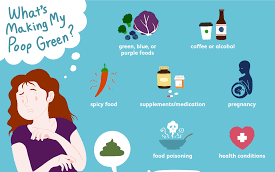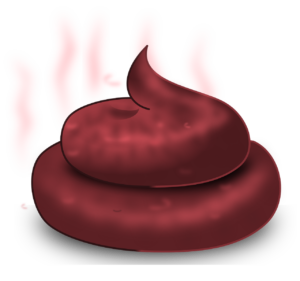Everybody poops, and, as expected, everybody should check to see the colour, shape or texture of their poop. After all, didn’t health experts say the appearance of your poop can be a sign of a medical condition that requires treatment?
Stool color is generally influenced by what you eat and the amount of bile in your stool. A bile is a greenish-yellow fluid consisting of waste products, cholesterol, and bile salts that are secreted by the liver cells to carry away waste and break down fats during digestion.
Check out what your poop colour suggests and when to worry!

Green poop: According to the online platform, Cleveland Clinic, it could be that something you ate was green, blue, or purple. Food may be moving through the large intestine too quickly, such as due to diarrhoea. As a result, bile doesn’t have time to break down completely.

Black poop: While most cases of black stools are from eating black foods or iron supplements, experts warn that black coloured stools may also be suggestive of bleeding into the gastrointestinal tract, and you should contact your doctor to determine the cause of any potential bleeding.
Bloating, gas, and constipation can all be features of irritable bowel syndrome or other conditions, physicians warn; adding, “Black colured stool can be a symptom of a more serious condition. So, you need to see an expert as soon as possible.”

Bright red: Red food colouring, beets, cranberries, tomato juice or soup, red gelatin, or drink mixes are possible dietary causes of having bright red poop, nutritionists say. However, gastroenterologists say it may mean bleeding in the lower intestinal tract, such as the large intestine or rectum, often from haemorrhoids.

Yellow, greasy, foul-smelling stool: According to Dr. Clarisse Bezerra, a Family Doctor, this could mean excess fat in the stool, such as due to a malabsorption disorder, for example, Celiac disease.
According to the National Institutes of Health, Celiac disease, sometimes called Celiac sprue or gluten-sensitive enteropathy, is an immune reaction to eating gluten, a protein found in wheat, barley and rye. If you have Celiac disease, eating gluten triggers an immune response in your small intestine.
The symptoms of the disease are diarrhoea, fatigue, weight loss, abdominal pain, constipation, bloating, nausea and vomitting.
 Light-colored, white or clay-coloured: Certain medications and other anti-diarrhoeal drugs may cause this. But, it may mean that your body is not producing bile. It could be that you have an infection or that your bile duct is blocked
Light-colored, white or clay-coloured: Certain medications and other anti-diarrhoeal drugs may cause this. But, it may mean that your body is not producing bile. It could be that you have an infection or that your bile duct is blocked


